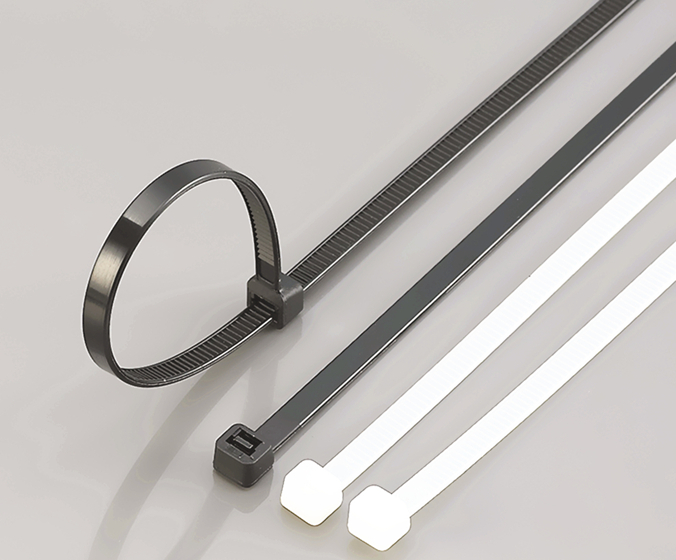Nylon cable ties, also known as zip ties, are versatile and commonly used for bundling and securing items together.
Steps to use or install nylon cable ties:
–
1 Select the appropriate size
The length of the tie should be long enough to wrap around the items you want to secure and have enough slack to loop back through the locking mechanism.
2 Install
Wrap the nylon tie around the items you want to secure. Feed the tail end of the nylon tie through the locking mechanism, which is typically a small rectangular box with ridges on one side. Pull the tail end through the locking mechanism until it’s snug. Avoid over-tightening the tie, as this can damage the items you’re securing.
For this step, you can use a cable tie tensioning tool to ensure the cable tie is as tight as possible (often referred to as a cable tie gun). It is an efficient way to get the job done right.
3 Do the trim and double-check
Use a pair of pliers to trim the excess tail end of the nylon tie. Trim as close to the locking mechanism as possible to prevent any sharp edges that could injure someone.
Double-check that the nylon tie is secure and can’t be easily pulled apart.
Nylon cable ties are commonly used for a variety of applications, such as securing cables and wires, bundling items together, and even as temporary fixes for broken items. Always make sure to use the appropriate size of nylon tie for the job and avoid over-tightening to prevent damage.
Nylon cable ties are typically designed to be permanent closures, and once they are tightened, they cannot be opened without cutting them.
Steps to open or remove a nylon cable tie:
–
1 Locate the locking mechanism and release
The locking mechanism is the small, rectangular piece located near the head of the cable tie. Use a small flat tool, such as a screwdriver or a pair of pliers, to press down on the locking mechanism. This will release the teeth of the cable tie. Once the locking mechanism has been released, you can gently pull on the tail of the cable tie to remove it.
2 Cut the cable tie
If the cable tie is too tight to be released with a tool, or if you don’t have access to the locking mechanism, you may need to cut the cable tie with a pair of scissors or wire cutters.
It’s important to use caution when cutting cable ties, as the sharp edges of the cut cable tie can cause injury. Wear gloves and eye protection, and cut the cable tie as close to the locking mechanism as possible to minimize the length of the sharp edges.

